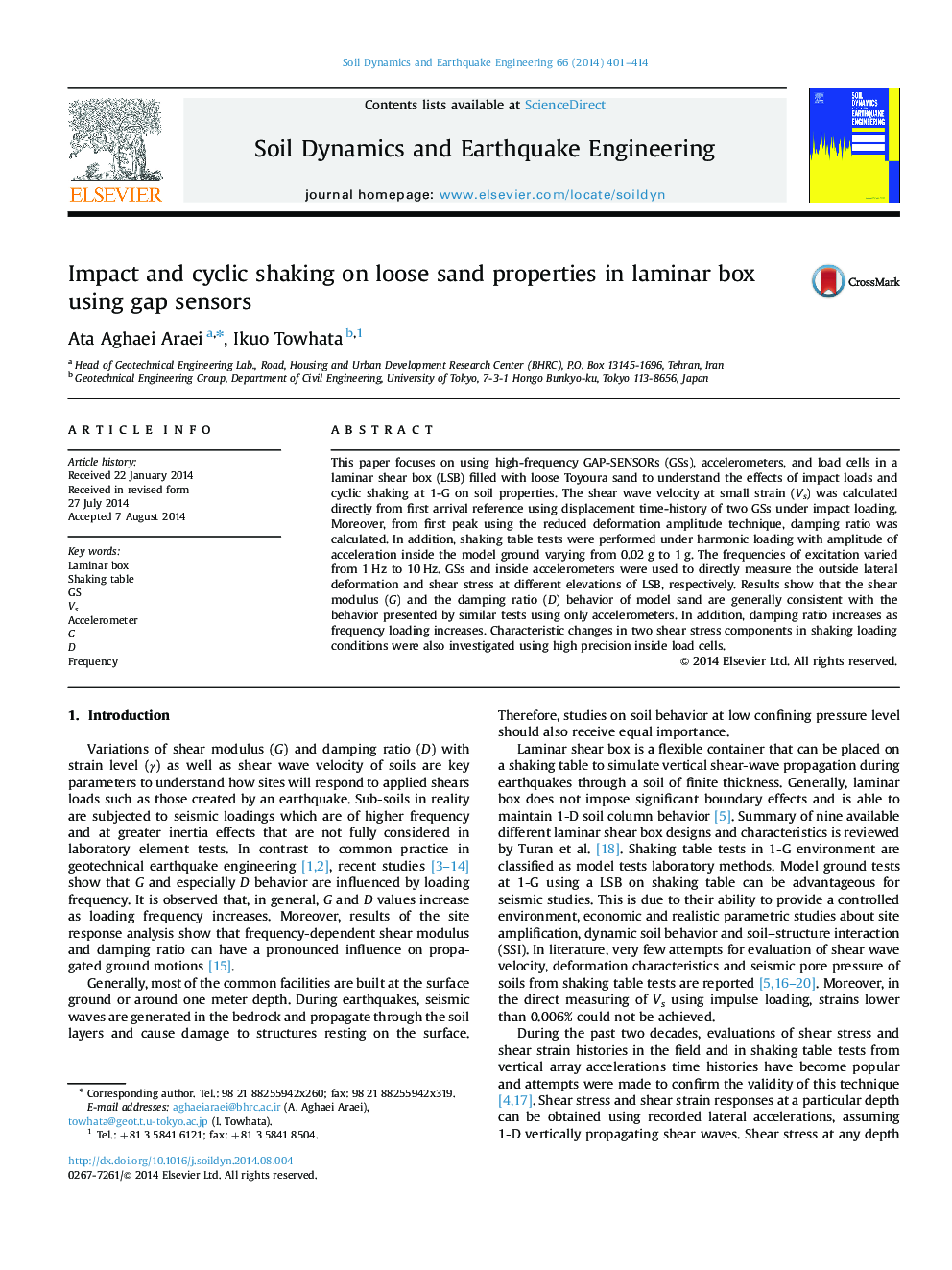| Article ID | Journal | Published Year | Pages | File Type |
|---|---|---|---|---|
| 6772484 | Soil Dynamics and Earthquake Engineering | 2014 | 14 Pages |
Abstract
This paper focuses on using high-frequency GAP-SENSORs (GSs), accelerometers, and load cells in a laminar shear box (LSB) filled with loose Toyoura sand to understand the effects of impact loads and cyclic shaking at 1-G on soil properties. The shear wave velocity at small strain (Vs) was calculated directly from first arrival reference using displacement time-history of two GSs under impact loading. Moreover, from first peak using the reduced deformation amplitude technique, damping ratio was calculated. In addition, shaking table tests were performed under harmonic loading with amplitude of acceleration inside the model ground varying from 0.02Â g to 1Â g. The frequencies of excitation varied from 1Â Hz to 10Â Hz. GSs and inside accelerometers were used to directly measure the outside lateral deformation and shear stress at different elevations of LSB, respectively. Results show that the shear modulus (G) and the damping ratio (D) behavior of model sand are generally consistent with the behavior presented by similar tests using only accelerometers. In addition, damping ratio increases as frequency loading increases. Characteristic changes in two shear stress components in shaking loading conditions were also investigated using high precision inside load cells.
Keywords
Related Topics
Physical Sciences and Engineering
Earth and Planetary Sciences
Geotechnical Engineering and Engineering Geology
Authors
Ata Aghaei Araei, Ikuo Towhata,
